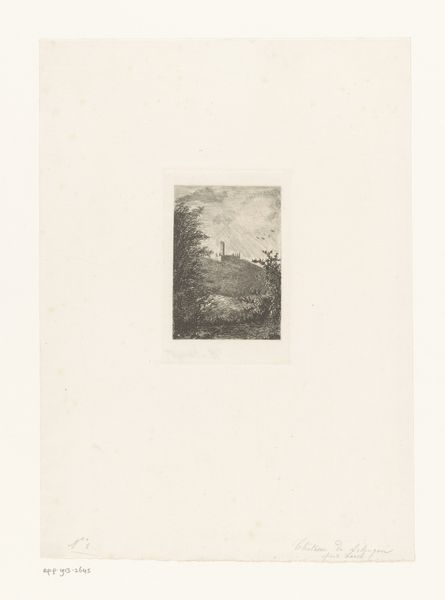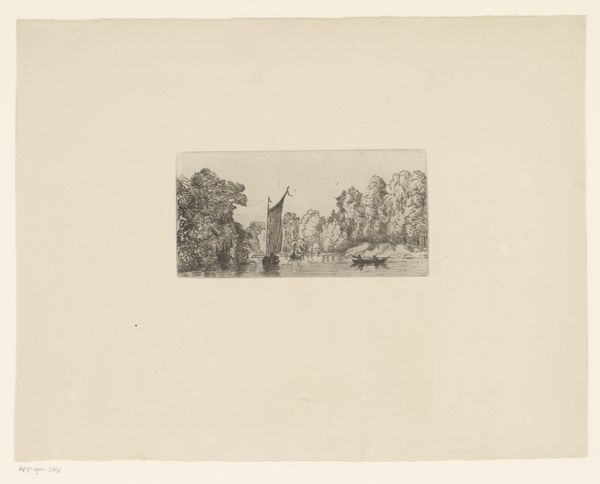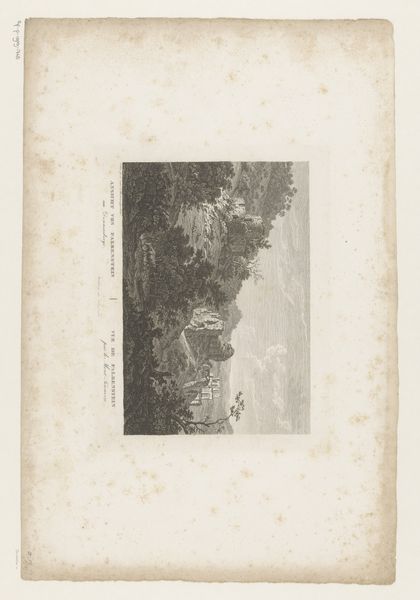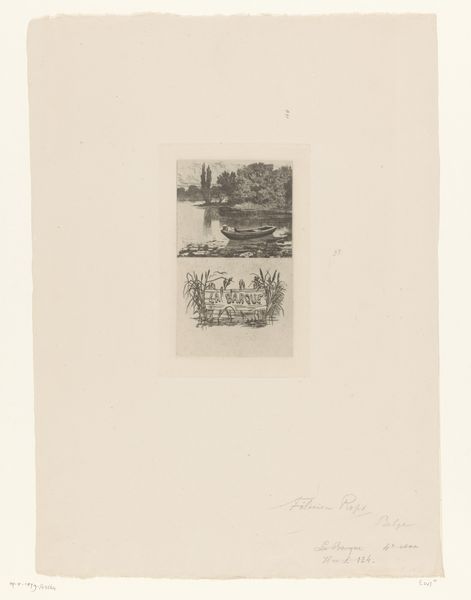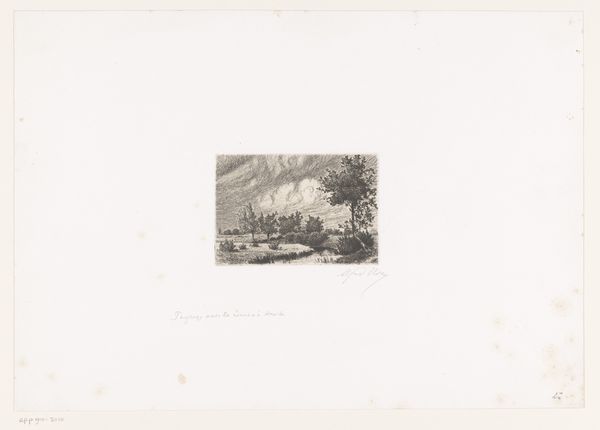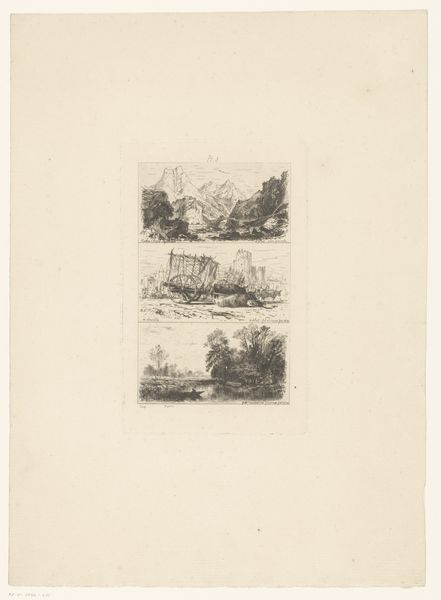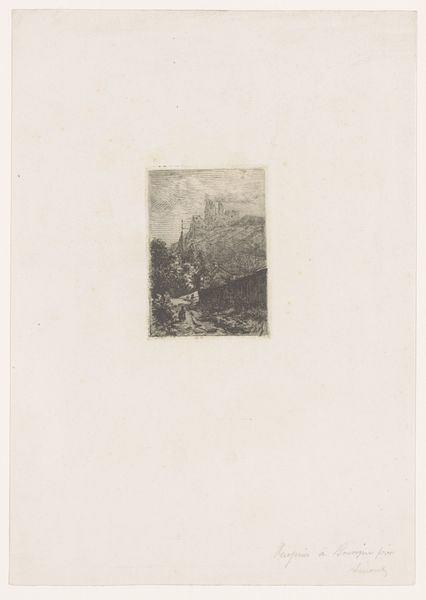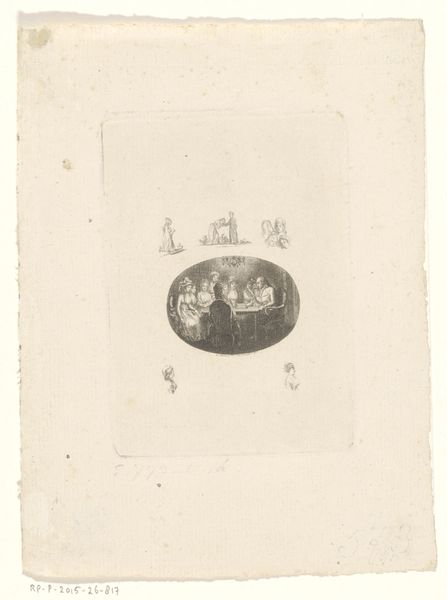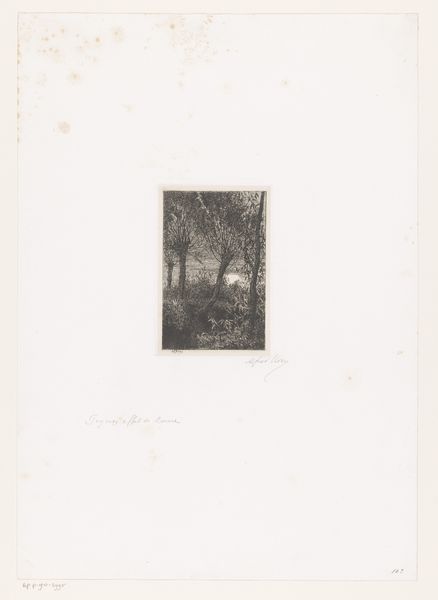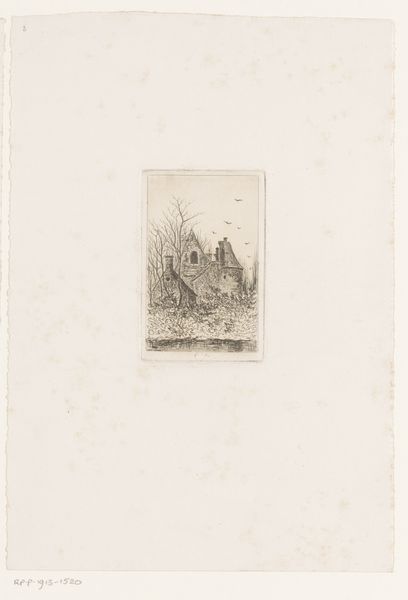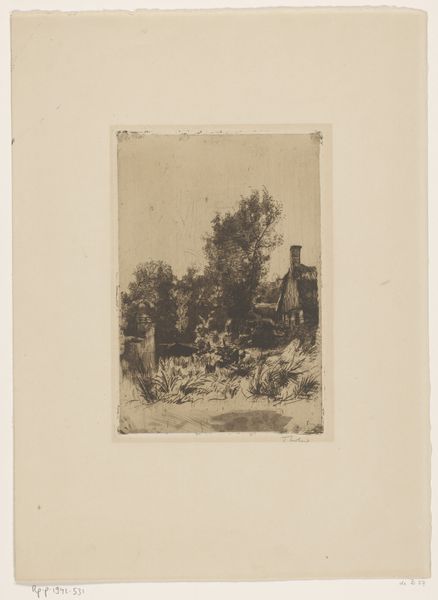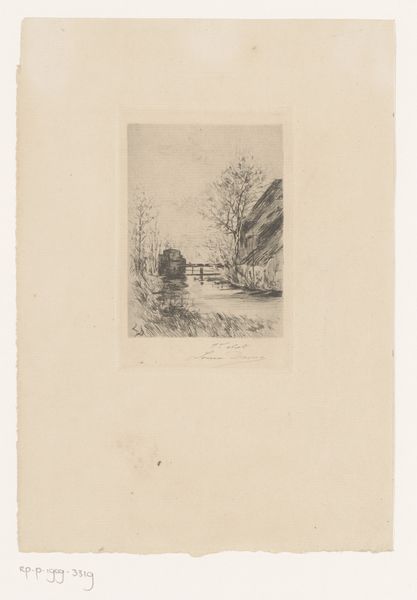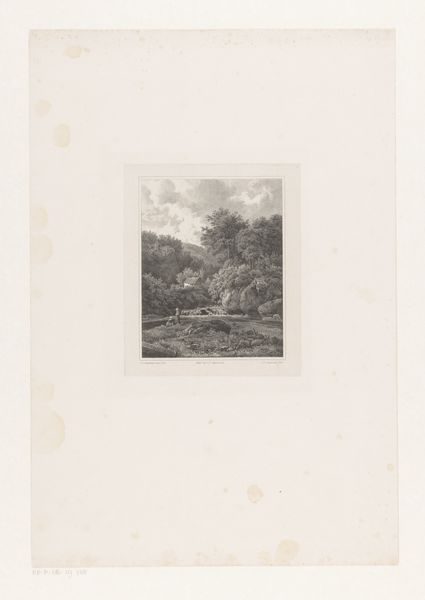
print, etching
# print
#
etching
#
landscape
#
monochrome
Dimensions: height 345 mm, width 312 mm
Copyright: Rijks Museum: Open Domain
Arnoud Schaepkens made these four landscape scenes using etching, a printmaking technique that democratized image production in the 19th century. With etching, a metal plate, usually copper or zinc, is coated with a waxy, acid-resistant ground. The artist scratches an image into this ground with a needle, exposing the metal. The plate is then immersed in acid, which bites into the exposed lines, creating grooves. Ink is applied to the plate, filling these grooves. The surface is wiped clean, and the image is transferred to paper under high pressure. The process allows for detailed, finely textured images, and these small landscapes demonstrate that capacity, showing windmills, churches, and simple dwellings. This printmaking method made art more accessible by producing multiple copies, thus reflecting the rise of industrial capitalism and mass production during the time. Schaepkens' choice of etching speaks to a broader shift in art towards techniques that balanced artistic skill with the demands of a changing society. Ultimately, understanding the materials and methods used can reveal a great deal about the context in which art is created and consumed.
Comments
No comments
Be the first to comment and join the conversation on the ultimate creative platform.

